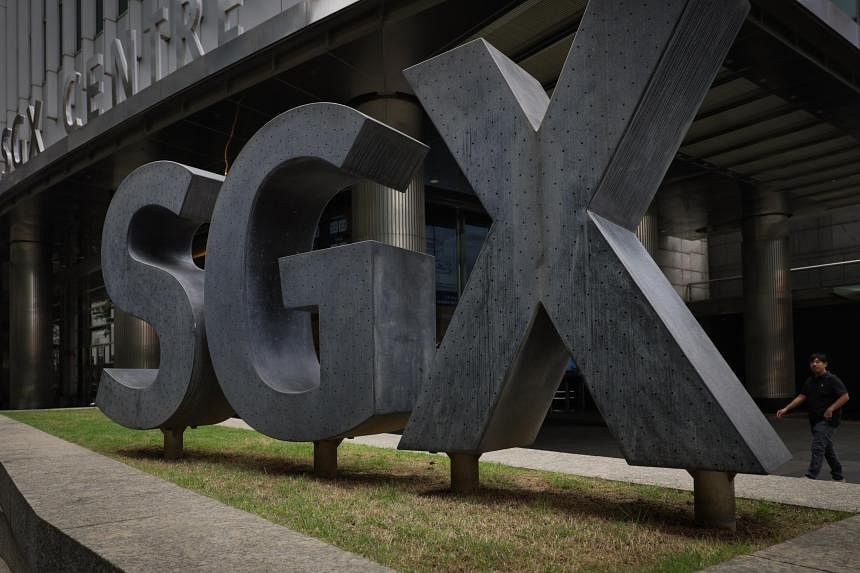SINGAPORE - A tech stock rally led by Nvidia has sent markets soaring to new highs and prompted re-ratings on expectations that the rally could provide momentum to lift sentiment to new highs.
What started as a 265 per cent jump in quarterly revenue and bullish forward projections by the chipmaker sparked a frenzy of broad-based buying last week which sent Wall Street stocks towards their highest-ever levels.
The Dow Jones Industrial Average rose 1.3 per cent for the week to a record 39,131.53, while the S&P 500 gained 1.7 per cent to 5,088.8 points on the back of tech and AI-related stocks. The Nasdaq Composite gained 1.4 per cent to 15,996.82 points.
“Accelerated computing and generative AI have hit a tipping point,” said Mr Jensen Huang, Nvidia’s founder and CEO. “Demand is surging worldwide across companies, industries and nations.”
His pronouncements have lifted Nvidia’s market valuation to US$2 trillion (S$2.69 trillion), making it the third-most valuable listed company on Wall Street behind Microsoft and Apple, beating Amazon and Alphabet in the process.
The tech-driven Wall Street rally has inspired gains in most key Asian and European markets. Japan’s Nikkei 225 hit an all-time high last week, while other benchmarks across the region punched higher.
But Singapore remains an exception. The Straits Times Index finished the week at 3,184.91, down 1.2 per cent as earnings dominated the local market spotlight, with institutions net selling for most of the week. In fact, the Singapore bourse has been a standout underperformer in 2024.
Within the STI, there were 19 decliners and 11 gainers on the week. Genting Singapore declined 10.6 per cent despite reporting an 80 per cent rise in net profit to $611.6 million for FY2023 ended Dec 31. In a report issued late last week, Maybank Securities maintained a buy on the stock, but with a lower target at $1.16.
Singapore Airlines fell 10.5 per cent to end the week at $6.55 despite the carrier posting a record operating and net profit for the first nine months of fiscal 2024. The company warned of heightened competition along with macroeconomic challenges and inflationary pressures.
UOB drifted down to $28.25 even after its net profit for the three months to December 2023 rose 22 per cent to $1.4 billion, from $1.15 billion a year ago. The bank declared a final dividend of 85 cents per share, bringing the total dividend for the whole of 2023 to $1.70.
Among the gainers was Wilmar International, which was up 4.6 per cent after it reported that net profit for the half year ended December 2023 fell 18.8 per cent to US$973.9 million, from US$1.2 billion the year before. UOL Group was up 4.5 per cent after it was awarded a 7,031 sq m residential-cum-commercial site in Orchard Boulevard for $428 million.
Among the notable results this week will be Seatrium, OCBC, UOL, CDL, CapitaLand Investment, ST Engineering and Sats.
While Nvidia was the talking point in markets last week, the bigger issue stalking sentiment remains inflation and interest rates. With January’s US consumer price index and producer price index readings coming in hotter than expected, it is anyone’s guess when and how much the US Federal Reserve will cut rates.
Goldman Sachs sees four rate cuts in 2024, starting in June.
But the United States Federal Reserve has reiterated that it will not be rushed into rate cuts and any decision will be data-driven. This point was driven home last week by Governor Christopher Waller, who on Feb 22 said that he will need to see more evidence that inflation is cooling before he is willing to support interest rate cuts.
While holding its rates steady for the fourth consecutive meeting in January 2024, Fed chairman Jerome Powell acknowledged that inflation has come down considerably.
Mr Vasu Menon, managing director for investment strategy at OCBC Bank, forecasts the Fed funds rate falling to about 4.75 per cent by the end of 2024.
“The 75-basis-point decline in the Fed’s key interest rate is likely to cause the US 10-Year Treasury yields to fall to 3.25 per cent by the end of this year from about 4.3 per cent currently,” he noted. “We also foresee the US economy slipping into a mild recession later this year, which will also weigh on Treasury yields and send them lower.”
But the market is not waiting. Stocks are punching higher. The question some are asking is whether we might be witnessing a dot.com-style, tech-driven equity bubble in the markets. Valuations do look stretched, especially on the tech front.
However, the difference is that while the 2000 dot.com bubble was inflated by a lot of hype, hubris and hoopla which came ahead of actual innovation, the current interest in the tech stock rally is being driven by real technological transformation.
Mr Stephen Innes, managing partner at SPI Asset Management, pointed out that the financial numbers of these tech companies continue to meet or exceed expectations, while the firms themselves have become part of the fabric of life for everyone, symbolising a significant portion of daily existence.
“Bears argue that the ‘Magnificent 7’ represents an unsustainable bubble founded on the belief that super-intelligent chatbots will revolutionise productivity and economic activity without fuelling inflation, all while potentially posing existential risks if they become self-aware,” wrote Mr Innes.
“On the other hand, bulls contend that the optimism surrounding AI and tech innovation is warranted. They argue that the dominance of mega-cap companies predates the AI narrative and that investing in these companies provides exposure to potential technological advancements, including AI, as a bonus option.”
That said, investor sentiment and cash levels remain at their highest in over two years. In the US, consumer confidence is at a three-year high. Despite the prevailing geopolitical uncertainties, the US economy – which has been the driver of global growth – shows no signs of a potential sharp slowdown.
Taken together, the betting man would reckon the market upswing is intact, especially as momentum buying shows no sign of abating.
But valuations in some portions of the market are extremely high. It might be wise to diversify into other areas of the market, especially into mid-caps which have yet to show the same gains as the frontliners.
The week ahead will be chock-full of inflation-related data, starting with Japan’s January consumer price index (CPI) data on Feb 27, followed by the US’ January personal consumption expenditure (PCE) deflator on Feb 29 and the euro zone’s February CPI estimate on March 1.
In the US, headline and core January PCE inflation readings on Feb 29 will be especially scrutinised by investors. Markets are expecting resilient monthly growth of 0.3 per cent and 0.4 per cent respectively versus December’s 0.2 per cent. These data points will be key to gauge the timing for the Fed to start cutting rates.
Going forward, expect positive returns and market volatility to co-exist. While there will occasionally be hits and misses with economic data and newsflows, the broad trend appears to be one where inflation along with interest rates will fall over the next two to three years. This will underpin the market’s rise.
So it is important to take a medium-term view with investments and not get distracted by short-term noise.


